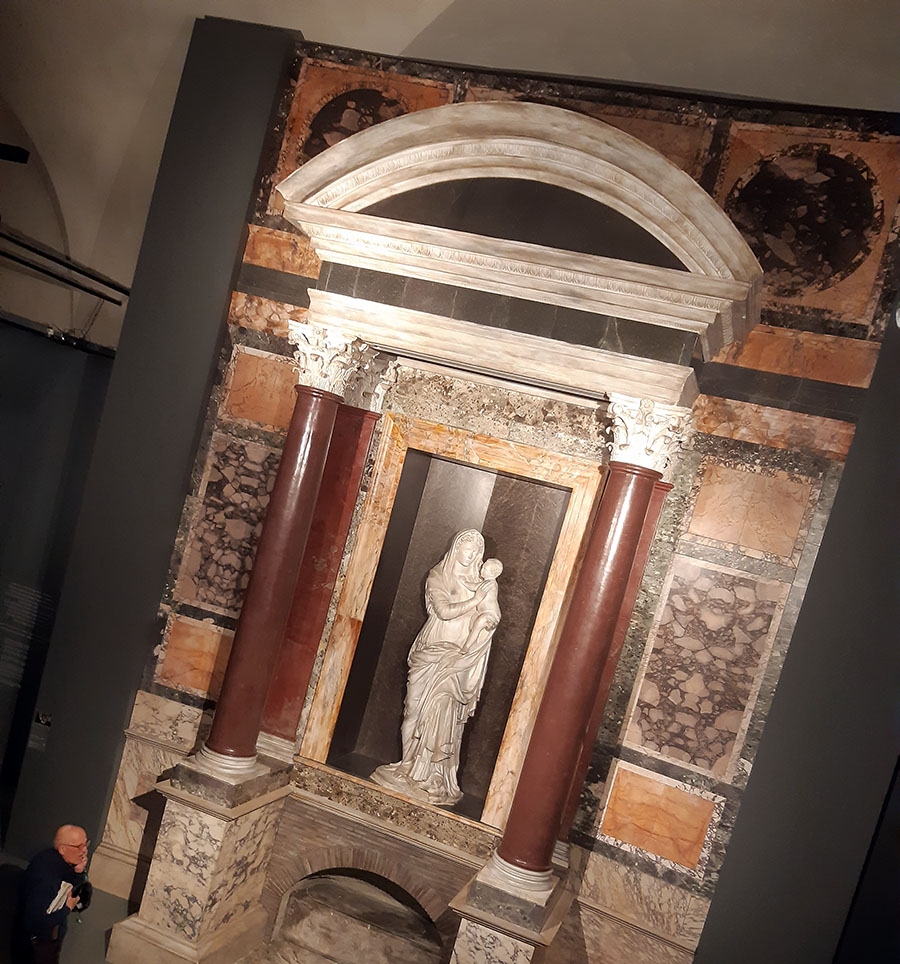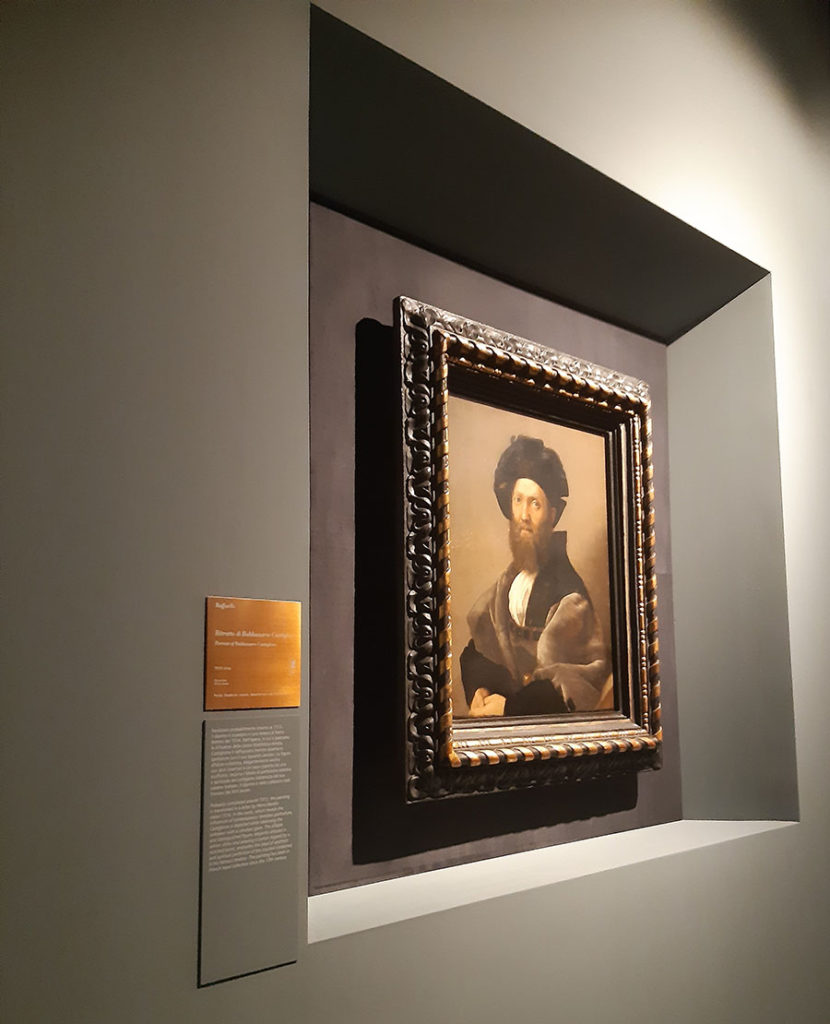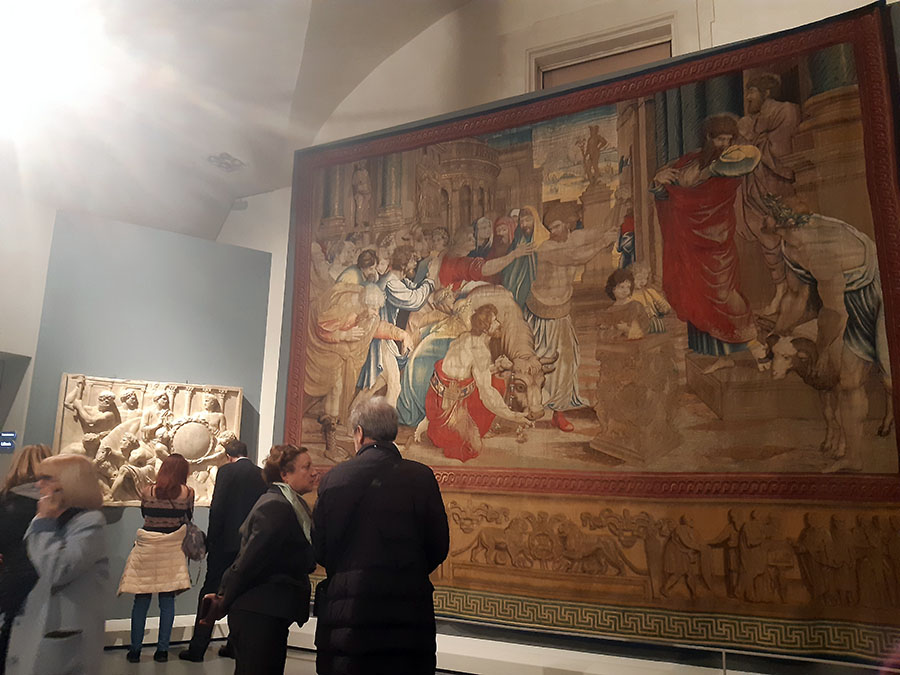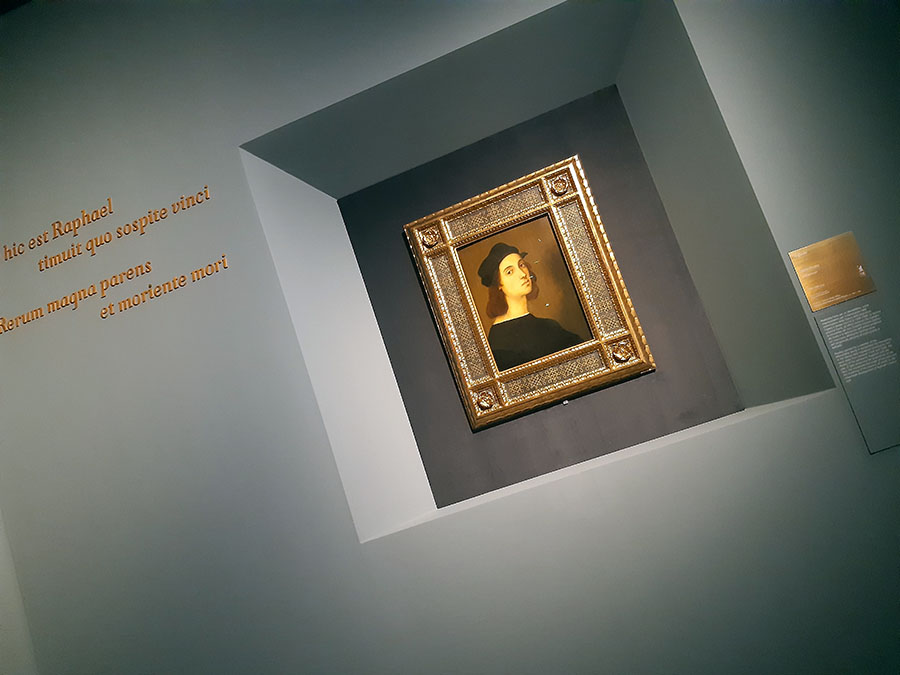Rome, Scuderie del Quirinale, Raphael: 1520-1483
(Italian Version below*)
In the first week of March, the Scuderie del Quirinale inaugurated what for the sector workers was the masterpiece exhibition of the year.
In recent years I have carefully selected the exhibitions to visit.
Very often the big names were only “mirrors for the larks”, to make cash without a real scientific plan behind them, but the 500 years of the death of Raphael from Urbino, certainly deserved a high-level exposure with exceptional international loans.
And so it was!
Italy was already shrouded in what would later be labeled a “pandemic”, so I decided to visit the exhibition on the first day available to the public, suspecting that soon our lives had been restricted.
Unfortunately, it really was and the exhibition is currently “frozen” like our lives and our cultural heritage.
I will try to tell you about my experience!
I appreciated the idea of a backward exhibition that started from the year of death, 1520 to get to the youth formation and therefore to the birth in Urbino of Raffaello in 1483. It is a progressive flashback.
Entrance to the exhibition is simply impactful; the curators wanted to rebuild the tomb of Raphael, preserved in the Pantheon. The effect was very strange, but at the same time involving. Did I ask myself: am I not at the Scuderie? Maybe I ended up at the Pantheon!
When Raphael died in Rome in 1520 on his birthday on April 6, he was only 37 years old, the whole city was paralyzed.
The death of the artist is still shrouded in mystery, Vasari helps us a lot in this regard, most converge that he fell ill with syphilis, because of his love excesses, and that at the head of the bed in which he lay dying there was the Transfiguration (preserved in the Vatican Pinacoteca).
By his will, he will be buried in the Pantheon and on his grave, we can read the famous epitaph written by Pietro Bembo: “Here Rapahel lies, from whom nature feared while he was alive to be won, but now that he is dead he fears to die”.
Starting from death, the exhibition analyzes the different artistic phases of his life and the multiple attitudes, being Rapahel a genius at 360 degrees and not simply a painter: he is an architect, a designer, a true entrepreneur of the Renaissance with his formidable and envied workshop.
We find ourselves in the first rooms, in front of the fantastic portraits of Baldassare Castiglione, his trusted friend with whom he will write the famous letter addressed to Leone X Medici, also portrayed and present in the exhibition, on the preservation of the heritage of Ancient Rome.
This interest in the protection of antiquities will mean that he can be considered the first Superintendent of the eternal city.
It is a riot of works that envelop us, designs that we can define as surprising and that leave you breathless for the attention to detail, preparatory cartoons like Moses in front of the burning bush from the Capodimonte Museum and, at the end of the first exhibition floor, a moment super exciting, represented by the tapestries!
He also delighted with the tapestries (visible the Sacrifice of Listra) you will think. Raphael lends his genius to any artistic form.
The reference for those who “live and eat art” is to the tapestries of the Sistine Chapel, now preserved in the Vatican art gallery.
The second floor opens with a series of female portraits in which it is impossible not to name the famous Fornarina. We walk in this timeline that shows us an architect Raphael, engaged in the infinite construction site of the Fabbrica di San Pietro and Villa Madama. Right now we are at the cornerstone of his career, in the first decade of the 1500s, when Rome was the new Florence and the young man from Urbino looked to the older Michelangelo, shoulder to shoulder in the Vatican palaces.
The exhibition tells of the Vatican Rooms, the Lodges, the love frescoes of Villa Farnesina and slowly leads us to the end of our journey, to the transfer to Florence, to training and birth.
Raffaello was born in Urbino in a small residence which can still be visited by Giovanni Santi, a renowned painter and will take his first steps here. The moment when he decided to leave his own lands and move to Florence is represented by the Lady with the Unicorn, (clear influence of Leonardo’s Mona Lisa, running at that time) and the Dream with the knight, who seems to precede the departure very little.
Just as from the beginning of the exhibition the reconstruction of the tomb is alive in my mind, so is the final greeting with the self-portrait, preserved in the Uffizi in Florence, in which “his face” seems not to be touched by the passage of time.
Raphael will be divine, in divine eternal beauty.
Scuderie del Quirinale, meetings before the exhibition
——————————————————————————————————————–
Nella prima settimana di Marzo, le Scuderie del Quirinale hanno inaugurato quella che per gli addetti al settore era la mostra capolavoro dell’anno.
Negli ultimi anni seleziono con cura le mostre da visitare. Molto spesso i grandi nomi sono stati solo specchietti per le allodole, per fare cassa senza un vero piano scientifico alle spalle, ma i 500 anni della morte del grande urbinate meritavano certamente un’esposizione di alto livello con prestiti eccezionali di carattere internazionale.
E così è stato!
L’ Italia era già avvolta in quella che poi sarebbe stata etichettata come una “pandemia”, così ho deciso di visitare la mostra nel primo giorno disponibile al pubblico, sospettando che di li a poco le nostre vite avessero subito delle restrizioni. Purtroppo è stato davvero così e la mostra è attualmente “congelata” come le nostre vite ed il nostro patrimonio culturale.
Proverò a raccontarvi la mia esperienza!
Ho apprezzato l’idea di una mostra a ritroso che partisse dall’anno della morte, il 1520 per arrivare alla formazione giovanile e quindi alla nascita ad Urbino di Raffaello nel 1483. E’ un progressivo flashback.
L’ingresso alla mostra è semplicemente di impatto; i curatori hanno voluto ricostruire la tomba di Raffaello, conservata al Pantheon. L’’effetto è stato stranissimo, ma al contempo coinvolgente. Mi sono chiesta: non sono alle Scuderie? Forse sono finita al Pantheon!

Quando Raffaello muore a Roma nel 1520 nel giorno del suo compleanno il 6 Aprile, aveva solo 37 anni, l’intera città rimase paralizzata. La morte dell’artista è tutt’ora avvolta da mistero, Vasari ci aiuta molto in merito, i più convergono che si sia ammalato di sifilide, a causa dei suoi eccessi amorosi, e che a capo del letto in cui giaceva morente c’era la Trasfigurazione (conservata alla Pinacoteca Vaticana).
Per sua volontà, sarà sepolto al Pantheon e sulla sua tomba si legge il celebre epitaffio scritto da Pietro Bembo: “Qui giace Raffaello, dal quale la natura temette mentre era vivo di essere vinta, ma ora che è morto teme di morire”.
Partendo dalla morte la mostra analizza le diverse fasi artistiche della sua vita e le molteplici attitudini, essendo Raffaello un genio a 360 gradi e non semplicemente un pittore: e’ un architetto, un disegnatore, un vero imprenditore del Rinascimento con la sua formidabile ed invidiata bottega.
Ci ritroviamo nelle prime sale, dinanzi ai fantastici ritratti di Baldassare Castiglione, suo fidato amico con cui scriverà la celeberrima lettera indirizzata a Leone X Medici, anche lui ritratto e presente in mostra, sulla conservazione del patrimonio di Roma Antica. Questo suo interesse verso la protezione delle antichità farà si che possa essere considerato come il primo Soprintendente della città eterna.

E’ un tripudio di opere che ci avvolgono, disegni che possiamo definire sorprendenti e che lasciano senza fiato per la cura dei dettagli, cartoni preparatori come il Mosè davanti al roveto ardente dal Museo di Capodimonte e, a chiusura del primo piano espositivo, un momento super emozionante, rappresentato dagli arazzi!
Si dilettava anche con gli arazzi (visibile il Sacrificio di Listra) penserete. Raffaello presta il suo genio per ogni forma artistica
Il rimando per chi “vive e mangia di arte” è agli arazzi della Cappella Sistina, oggi conservati nella pinacoteca vaticana.
Il secondo piano si apre con una serie di ritratti femminili in cui è impossibile non nominare la celebre Fornarina. Camminiamo in questa linea temporale che ci mostra un Raffaello architetto, impegnato nel cantiere infinito della Fabbrica di San Pietro e di Villa Madama. In questo momento siamo al cardine della sua carriera, nel primo decennio del 1500, quando Roma era la nuova Firenze ed il giovane urbinate guardava al più anziano Michelangelo, spalla a spalla nei palazzi vaticani.

La mostra racconta delle Stanze Vaticane, delle Logge, degli affreschi d’amore di Villa Farnesina e piano piano ci conduce alla fine del nostro viaggio, al trasferimento a Firenze, alla formazione e alla nascita.
Raffaello nasce a Urbino in una piccola dimora tutt’ora visitabile, da Giovanni Santi affermato pittore e qui muoverà i suoi primi passi. Il momento in cui decise di lasciare le proprie terre e trasferirsi a Firenze è rappresentato dalla Dama col liocorno, (chiaro influsso della Gioconda di Leonardo, in esecuzione in quel periodo) ed il Sogno con il cavaliere, che sembra precedere di pochissimo la partenza.
Così come dall’inizio della mostra la ricostruzione della tomba è viva nella mia mente, lo è il saluto finale con l’Autoritratto, conservato agli Uffizi a Firenze, in cui il “suo volto” sembra non essere toccato dal trascorrere del tempo.
Raffaello sarà divino, in divin bellezza eterna.

Sostieni la #culturachevince, aiuta la condivisione.
Scuderie del Quirinale, incontri prima della mostra
Tutti i diritti sono riservati. E’ vietata qualsiasi utilizzazione, totale o parziale, dei contenuti inseriti nel presente portale, ivi inclusa la memorizzazione, riproduzione, rielaborazione, diffusione o distribuzione dei contenuti stessi mediante qualunque piattaforma tecnologica, supporto o rete telematica, senza previa autorizzazione scritta di Selenia Morgillo.
6 Replies to “Rome, Scuderie del Quirinale, Raphael: 1520-1483”
Purtroppo non ho fatto in tempo a vederla e con questo racconto, per qualche minuto, mi è sembrato invece di essere là. Grazie
Sono felice di esser riuscita a trasportarti lì!
Che dire?! Grazie Selenia, sempre un piacere leggerti e sentirti raccontare l’arte
Grazie a te!!
Avrei voluto tanto visitarla, spero sarà possibile un giorno ma intanto grazie al tuo racconto lho potuta vivere insieme all’opera di un talentuoso artista. Grazie e complimenti!
Grazie a te per seguire il blog. E’ in continuo aggiornamento 🙂 con un solo scopo, cercare di fare arrivare la mia passione e la mia voglia di condividere le bellezze artistiche.